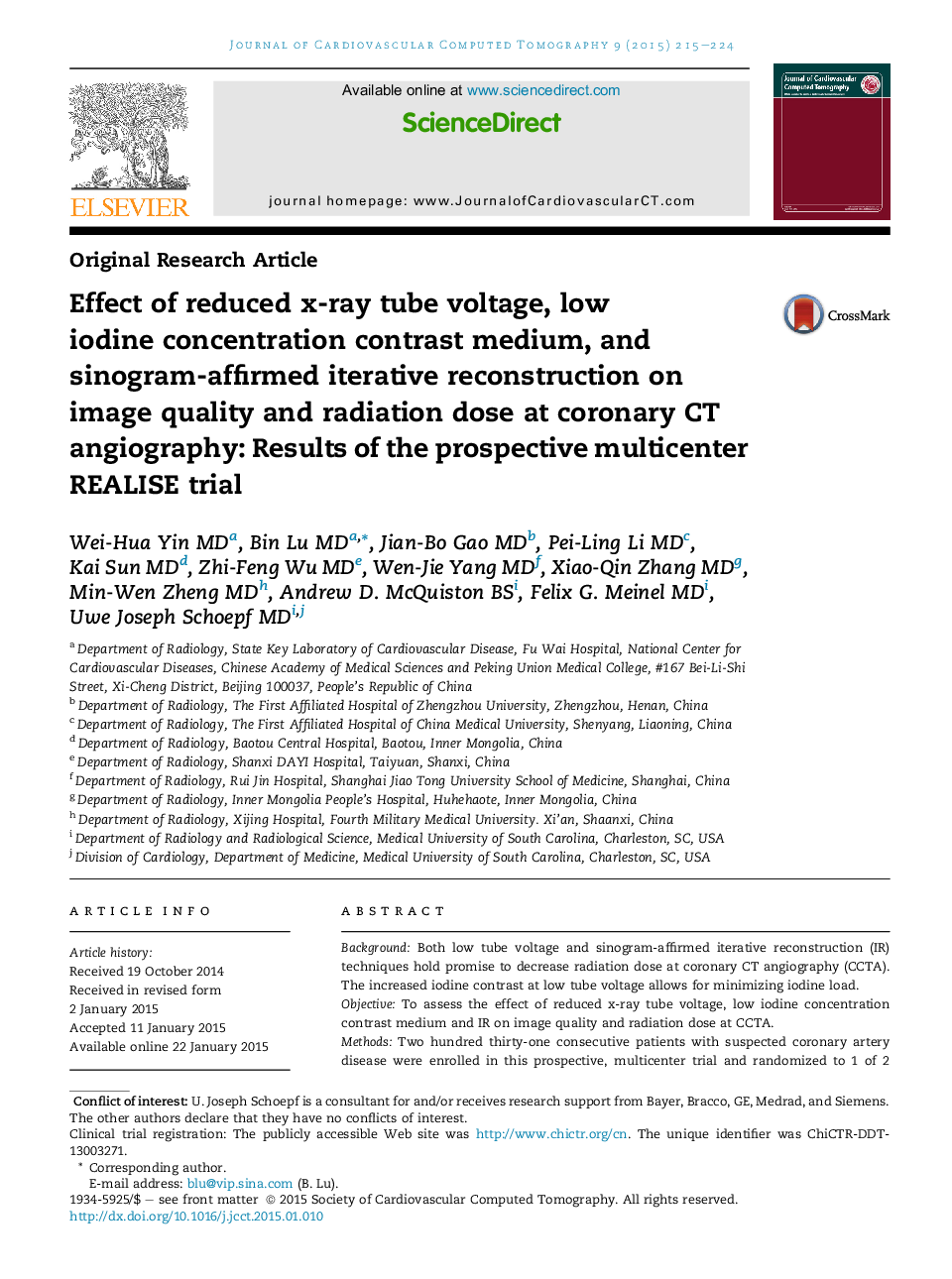| کد مقاله | کد نشریه | سال انتشار | مقاله انگلیسی | نسخه تمام متن |
|---|---|---|---|---|
| 2964541 | 1178698 | 2015 | 10 صفحه PDF | دانلود رایگان |

• The combined use of lower iodine concentration contrast, 100-kVp, and IR results in image quality that is comparable to a standard protocol using higher iodine concentration, 120-kVp, and FBP at CCTA.
• Using low x-ray tube voltage and iterative reconstruction allows for decreasing the iodine load and effective radiation dose at CCTA while maintaining image quality.
• The investigated “double-low” technique may serve to enhance the safety of CCTA and foster more universal acceptance of this test.
BackgroundBoth low tube voltage and sinogram-affirmed iterative reconstruction (IR) techniques hold promise to decrease radiation dose at coronary CT angiography (CCTA). The increased iodine contrast at low tube voltage allows for minimizing iodine load.ObjectiveTo assess the effect of reduced x-ray tube voltage, low iodine concentration contrast medium and IR on image quality and radiation dose at CCTA.MethodsTwo hundred thirty-one consecutive patients with suspected coronary artery disease were enrolled in this prospective, multicenter trial and randomized to 1 of 2 dual-source CCTA protocols: 120-kVp with 370 mgI/mL iopromide or iopamidol (n = 116; 44 women; 55.3 ± 9.8 years) or 100 kVp with 270 mgI/mL iodixanol (n = 115; 48 women; 54.2 ± 10.4 years). Reconstruction was performed with filtered back projection and IR. Attenuation, image noise, signal-to-noise ratio, and contrast-to-noise ratio were measured and image quality scored. Size-specific dose estimates and effective doses were calculated.ResultsThere were no significant differences in mean arterial attenuation (406.6 ± 76.7 vs 409.7 ± 65.2 Hounsfield units; P = .739), image noise (18.7 ± 3.8 vs 17.9 ± 3.4 Hounsfield units; P = .138), signal-to-noise ratio (22.5 ± 5.4 vs 23.7 ± 6.1; P = .126), contrast-to-noise ratio (17.5 ± 5.5 vs 18.3 ± 6.1; P = .286), or image quality scores (4.1 ± 0.9 vs 4.0 ± 0.9; P > .05) between 120-kVp filtered back projection–reconstructed and 100-kVp IR-reconstructed series. Mean iodine dose was 26.5% lower (18.3 ± 0.5 vs 24.9 ± 0.9 g; P < .0001), mean size-specific dose estimate was 35.1% lower (17.9 ± 6.6 vs 27.5 ± 8.2 mGy; P < .0001), and effective dose was 34.9% lower (2.3 ± 1.0 vs 3.5 ± 1.1 mSv; P < .0001) with the 100 kVp compared with the 120-kVp protocol, respectively.ConclusionUsing low x-ray tube voltage and IR allows for decreasing the iodine load and effective radiation dose at CCTA while maintaining image quality.
Journal: Journal of Cardiovascular Computed Tomography - Volume 9, Issue 3, May–June 2015, Pages 215–224